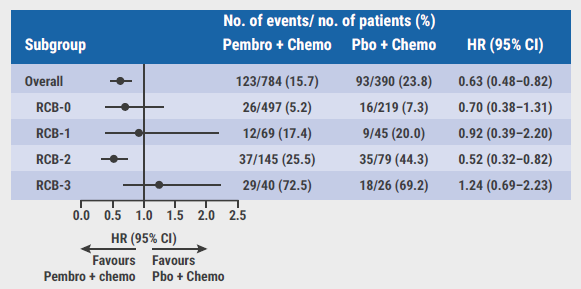Gliomas, accounting for approximately 45% of all paediatric central nervous system tumours, are surgically treated if possible [1]. Unfortunately, about 50% of these tumours cannot be resected, because the tumours are too large or inaccessible. Chemotherapy is the first-line standard of care in these patients. However, paediatric patients with BRAF V600E mutations show a less favourable response to chemotherapy and novel therapeutic options are needed for these patients [2]. Prof. Eric Bouffet (University of Toronto, Canada) presented results from a phase 2 trial (NCT02684058) which randomised patients with BRAF V600-mutant low-grade glioma to dabrafenib plus trametinib (n=73) or chemotherapy (carboplatin plus vincristine; n=37) [3]. Objective response rate (ORR) per central independent review was the primary endpoint.
The experimental arm showed superior ORR compared with the chemotherapy arm (47% vs 11%; OR 7.2; P<0.001). Most objective responses were partial responses in the experimental arm (44%) and in the chemotherapy arm (8%). The differences between the treatment arms were the most pronounced in ganglioglioma (ORR 38% vs 0%), low-grade glioma not otherwise specified (ORR 86% vs 17%), pilocytic astrocytoma (ORR 41% vs 8%), and pleomorphic xanthoastrocytoma (ORR 33% vs 0%). Furthermore, the progression-free survival (PFS) after 12 months favoured the experimental arm over the placebo arm (66.6% vs 26.1%; HR 0.31; P<0.001). These results were also reflected in the reported quality-of-life scores, which were improved in the experimental arm compared with the chemotherapy arm.
The safety analysis displayed that grade ≥3 adverse events (AEs) were more common in the chemotherapy arm (94% vs 47%). Similarly, treatment-related discontinuation rates were higher in the chemotherapy arm (9% vs 3%). Pyrexia (68%), headache (47%), and dry skin (26%) were more frequently reported in the experimental arm, whereas vomiting, nausea, and marrow-related issues were more common in the chemotherapy arm.
“In paediatric patients with BRAF V600-mutant low-grade glioma, the combination of dabrafenib plus trametinib was superior to standard-of-care frontline chemotherapy, with a manageable safety profile, demonstrating potential as a new standard-of-care for this population,” concluded Prof. Bouffet.
- Ostrom QT, et al. Neuro Oncol. 2021;23:301‒305.
- Lassaletta A, et al. J Clin Oncol. 2017;35(25):2934‒2941.
- Bouffet E, et al. Primary analysis of a phase II trial of dabrafenib plus trametinib (dab + tram) in BRAF V600–mutant pediatric low-grade glioma (pLGG). LBA2002, ASCO 2022 Annual Meeting, 3–7 June, Chicago, IL, USA.
Copyright ©2022 Medicom Medical Publishers
Posted on


